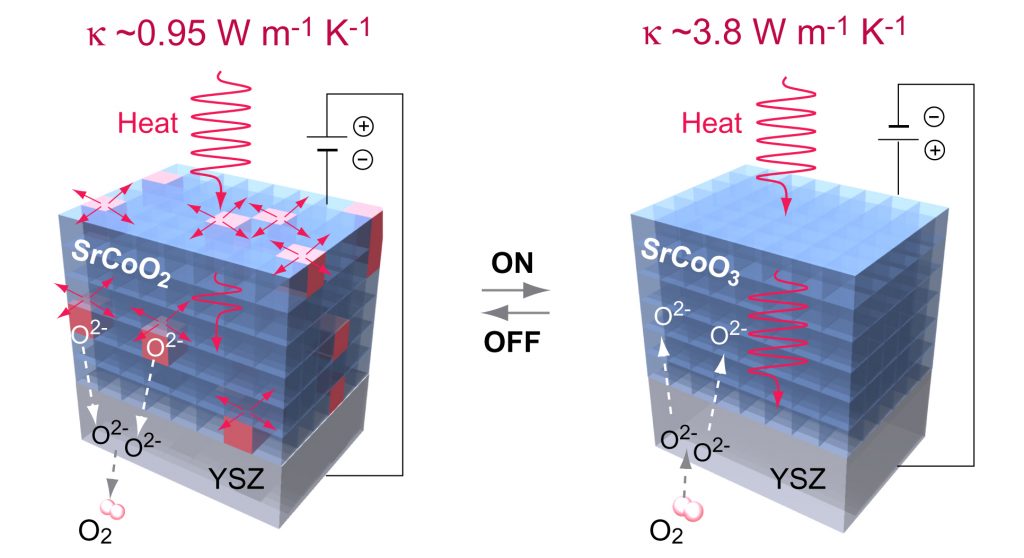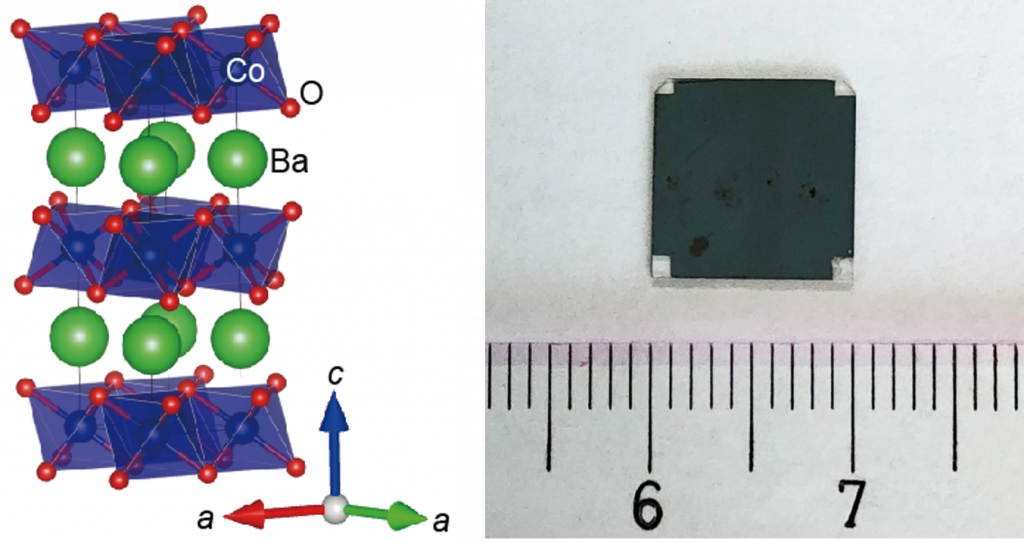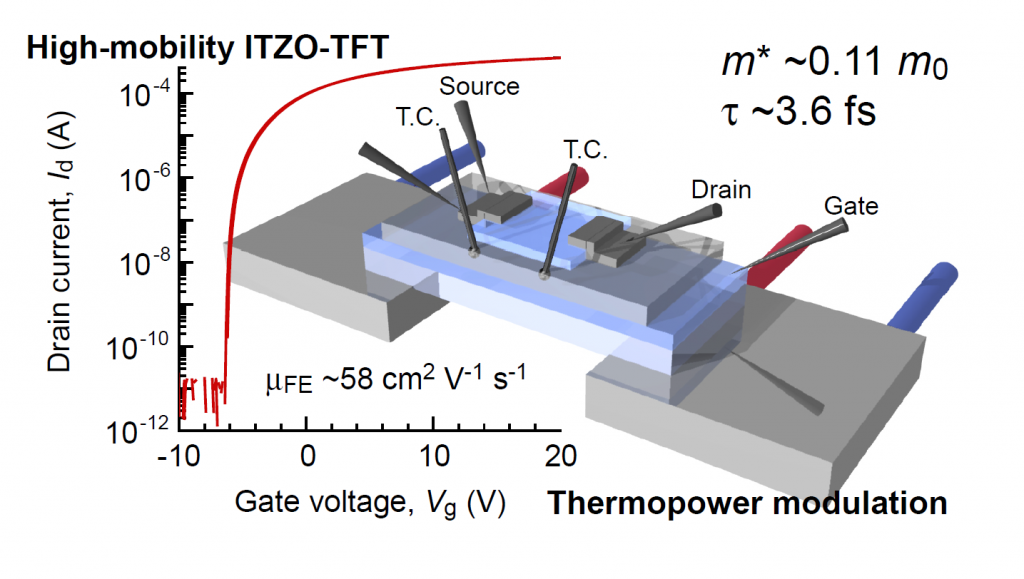Research
In our laboratory, we fabricate high-quality thin films with atomically flat surfaces using functional oxides, which have traditionally been treated as ceramics, and maximize the intrinsic potential of functional oxides. We aim to develop devices that are useful in the world. Professor Hiromichi Ohta’s group is conducting development of “solid-state electrochemical thermal transistors”, “oxide thermoelectric materials”, and “high-mobility transparent oxide thin film transistors”. Associate Professor Tsukasa Katayama’s group is conducting research on “multiferroic materials” and “flexible oxide thin films”.
Solid-state electrochemical thermal transistors
Thermal transistors that electrically control heat flow have attracted growing attention as thermal management devices and phonon logic circuits. Although several thermal transistors are demonstrated, the use of liquid electrolytes may limit the application from the viewpoint of reliability or liquid leakage. In 2023, our research group demonstrated a solid-state thermal transistor that can electrochemically control the heat flow with an on-to-off ratio of the thermal conductivity (κ) of ≈4 without using any liquid for the first time (Ref. 6). The thermal transistor is a multilayer film composed of an upper electrode, strontium cobaltite (SrCoOx), solid electrolyte, and bottom electrode. An electrochemical redox treatment at 280 °C in air repeatedly modulates the crystal structure and κ of the SrCoOx layer. The fully oxidized perovskite-structured SrCoO3 layer shows a high κ ≈3 .8 W m−1 K−1, whereas the fully reduced defect perovskite-structured SrCoO2 layer shows a low κ ≈ 0.95 W m−1 K−1. We are challenging to increase the on/off ratio of thermal conductivity (Ref. 7) and operating speed (Ref. 8).

Solid-state electrochemical thermal transistor
Oxide thermoelectric materials
Thermoelectric energy conversion technology has attracted attention as an energy harvesting technology that converts waste heat into electricity by means of the Seebeck effect. Oxide-based thermoelectric materials that show a high figure of merit are promising because of their good chemical and thermal stability as well as their harmless nature compared to chalcogenide-based state-of-the-art thermoelectric materials. Although several high-ZT thermoelectric oxides (ZT > 1) have been reported thus far, the reliability is low due to a lack of careful observation of their stability at elevated temperatures. In 2020, our research group found Ba1/3CoO2 epitaxial films exhibit ZT ~0.11 at room temperature (Ref. 1). In 2022, we found that the ZT reached ∼0.55 at 600 °C in air (Ref. 2). These values are the highest among reliable oxide thermoelectric materials and are comparable to those of commercially available p-type PbTe and SiGe.

(Left) Schematic crystal struture of Ba1/3CoO2, (Right) A Ba1/3CoO2 epitaxial film
High-mobility transparent oxide semiconductor thin-film transistors
Transparent amorphous oxide semiconductor (TAOS)-based thin-film transistors (TFTs) exhibit a field-effect mobility (μFE ∼ 10 cm2 V–1 s–1) 1 or 2 orders of magnitude higher than previously used a-Si TFTs (μFE ∼ 0.5 cm2 V–1 s–1). Consequently, TAOS-TFTs are applied as the backplane of active-matrix flat-panel displays. Amorphous InGaZnO4-based TFTs (Ref. 3) have been commercially available since 2012. Although they are widely used, the increased demand for high-resolution and high-definition displays necessitates TAOS-TFTs that exhibit higher μFE for pixel-driving circuits. TAOS-TFTs that are dominantly composed of In exhibit higher μFE ~100 cm2 V–1 s–1 (Ref. 4). However, such high-mobility TFTs often exhibit unstable operation. In order to clarify the operation mechanism of high-mobility TAOS-TFTs, we analyze it using our original electric field thermopower modulation method (Ref. 5).

Electric-field thermopower modulation method to analyze the TFT operation

